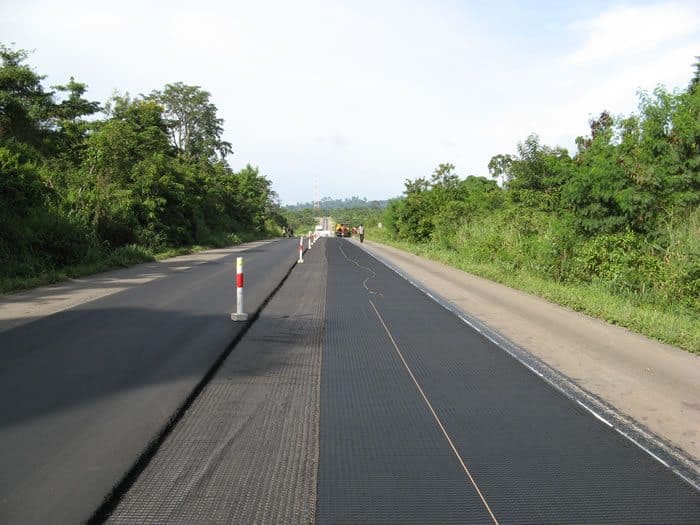
GeoTrans offers a wide range of reinforcement options for the construction of roads and railroads where subgrade soils need further stabilization. Our products confine and reinforce the fill and increase the load-bearing capacity of the roadways.
Geosynthetics is a planar product manufactured from polymeric material used with soil, rock, earth, or other geotechnical engineering-related material as an essential part of a man-made project, structure, or system. These products or materials can be used, often in conjunction with natural materials, for an enormous variety of purposes, including all surfaces of the transportation industry, including roadways, airports, railroads, and waterways. The main functions performed by geosynthetics are filtration, drainage, separation, reinforcement, provision of a fluid barrier, and environmental protection. Some geosynthetics are used to separate distinct materials, such as different types of soil, so that both can remain completely intact.
Geomembranes are essentially impermeable polymeric sheets used as barriers for liquid or solid waste containment. Geogrids are stiff or flexible polymer grid-like sheets with large openings used primarily as reinforcement of unstable soil and waste masses. Geonets are stiff polymer net-like sheets with in-plane openings used primarily as a drainage material within landfills. Geosynthetic clay liners are manufactured bentonite clay layers merged between geotextiles and/or geomembranes and used as a barrier for liquid or solid waste containment. Geo pipes are perforated or solid wall polymeric pipes used for the drainage of various liquids. Geocomposites are hybrid systems of any, or all, of the above geosynthetic types, which can function as specifically designed for use in soil, rock, waste, and liquid related problems. Geofoams are lightweight blocks, which act as void filling materials in certain construction applications.
The geosynthetic products most commonly used in roadway systems include geotextiles (woven and non-woven) and geogrids (biaxial and multiaxial), although erosion-control products, geocells, geonets (or geocomposite drainage products), and geomembranes have also been incorporated in several applications. These various types of geosynthetics can be used to fulfill one or more specific functions in a variety of roadway applications. For example, geosynthetics have been in use since the 1970s to improve the performance of unpaved roads on soft subgrade soils. Beginning in the 1980s, geosynthetics were utilized to minimize reflective cracking in asphalt overlays as well as to improve the performance of base aggregate layers.


